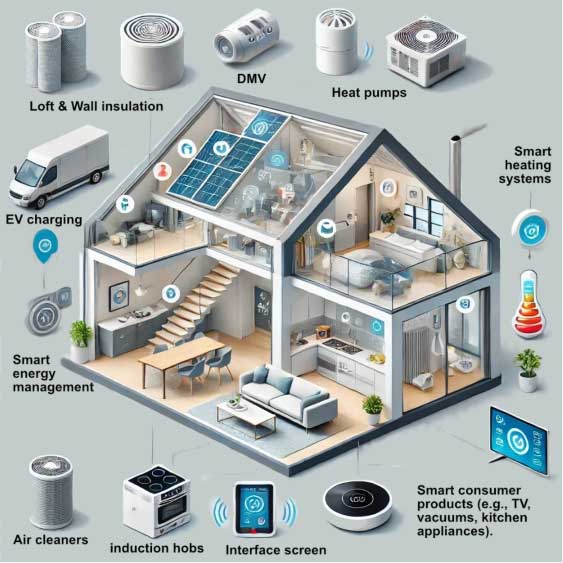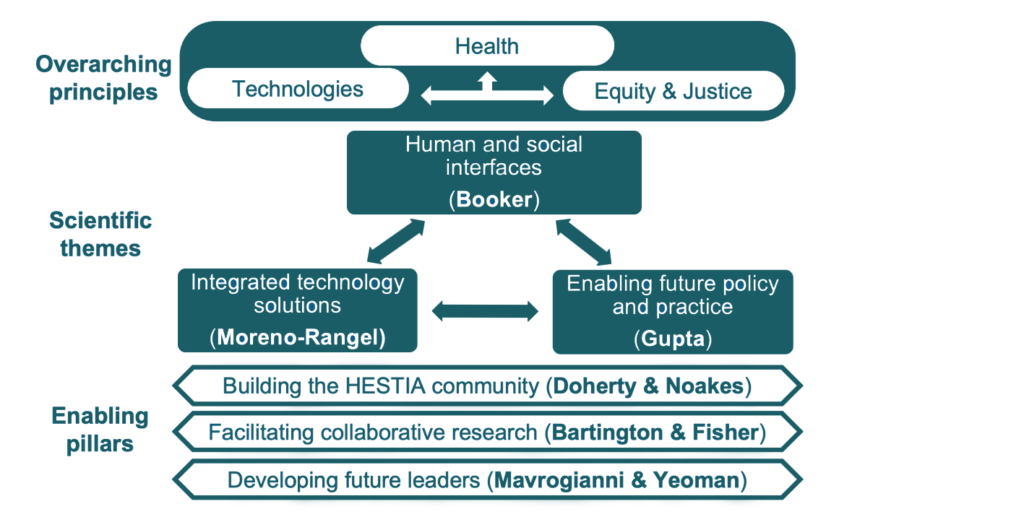Home Environment Solutions through Technology and Innovation for All
Accelerating the creation of indoor home environments that meet Net Zero targets while promoting physical and mental health and wellbeing for all, considering the interface of technologies and social factors
(Just) transitions?
The UK housing stock is undergoing an unprecedented transformation to reduce carbon emissions
The impacts of these changes on Indoor Environmental Quality (IEQ), physical and mental health and wellbeing, and equity are less well known

66% of our time is spent in the Home
Homes are our sanctuary, but large numbers of people, particularly the most vulnerable, live in homes which are neither fit for human and climate health, nor resilient to changing conditions
around 20%
of all Carbon Emissions are from Residential buildings
Large-scale engineering and technological changes to UK homes are already underway to meet our climate targets, primarily through whole-building and fabric-first approaches.
over 960,000
UK Homes estimated to have damp and mould
Four times higher for the poorest groups compared to the wealthiest.
This is associated with depression, and elevated mental distress
£1.4 billion
health burden on the NHS
Housing quality is a significant determinant of mental and physical health

Integrated Technologies
Alongside building scale interventions, a range of other technologies applied in homes may impact on climate and health-equity.
- Delivering low-carbon, healthy, and equitable homes through design and retrofit will need multiple different technologies
- Current efforts focus primarily on building fabric or system upgrades, yet there are significant opportunities through replacement technologies, smart devices, and consumer products
- The recent emergence of sensor and app driven technologies can enable public understanding and control of the residential environment, and consumer products (e.g. air cleaners, (de)humidifiers, air fresheners, portable heating) allow individual-led initiatives for improving home IEQ and energy efficiency
Our ultimate goal is to accelerate the creation of indoor home environments that meet Net Zero targets while promoting physical and mental health and wellbeing for all, considering the interface of technologies and social factors.
Health-equity-centred engineering approach
Home design and retrofit, integrating existing and emerging building technologies to maximise human and environmental health co-benefits, and minimise health inequalities.
Building Community
Drawing upon existing networks and forging new relationships to build a community across multiple academic disciplines and stakeholders in policy, industry, and the public through a series of in person and online activities. We will collectively define how health-equity impacts can be embedded in building design, technologies, and retrofit for the UK now and in the future
Developing Future Leaders
Prioritising researchers in the early stage of their careers to develop future leaders who are equipped to work across different academic disciplines and sectors, as well as with the public, to co-design and deliver housing solutions in an equitable way
Facilitating collaborative research
Working across our network, we will co-design a sandpit that performs feasibility studies to innovate in collaborative interdisciplinary and intersectoral partnerships to understand the role that different engineering interventions and technologies can play in home environments to improve human and environmental health for everyone

